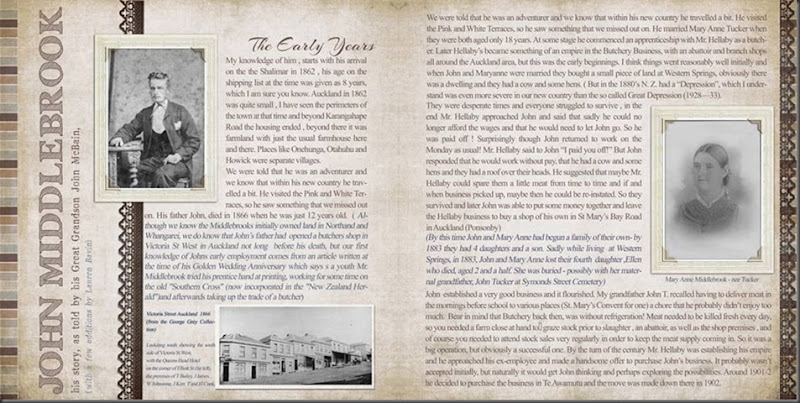Heres the continuing story of John Middlebrook as told by his Great Grandson John McBain ( with a few additions by myself)
By the turn of the 20th Century, John Middlebrook had a large and still growing family and had sold a successful butchery business in Ponsonby. He had travelled quite extensively within the North Island and had decided to move his family and business to Te Awamutu.
Bear in mind that Butchery back then, was without refrigeration! Meat needed to be killed fresh every day, so you needed a farm close at hand to graze stock prior to slaughter, an abattoir, as well as the shop premises, and of course you needed to attend stock sales very regularly in order to keep the meat supply coming in.
So it was a big operation, but obviously a successful one. When they first moved to Te Awamutu, the family lived above the shop, though some of the girls were married, and John Thompson stayed in Auckland doing his apprenticeship.
The railway link to Te Awamutu was quite an early one, which helped establish the town and surrounding area. John became an identity in the town and later served on council and all manner of other things. (He served on the Borough Council and the Cemetery and Domain Boards, was Vice President of the Municipal Band and a Director on the Waipa Post Board). John T. (my grandfather ) joined the business within a few years, He picked up the Maori language very well and in such a town in those times it brought a lot of custom.
I was told that Rewi Maniopoto was a customer in the very early days. The Maori customers used to bring official documents into the shop for my grandfather to interpret. (Interestingly John’s brother Samuel is also known for being fluent in the Maori language and also translated documents for local Maori, who “paid” him with various artifacts which are about to become the subject of a museum exhibition )
As I mentioned earlier John was always referred to as Honest John in Te Awamutu. Sale days in Te Awamutu were on a Thursday and most of the farmers would come into town to see their stock sold off, or to buy , or just because that was when they traditionally came in to shop. It was established that the stock auction would not start until John Middlebrook had arrived . Mind you, logically he was a vital customer, without his bidding true values were unlikely to be reached I am told also that he was seldom late.
With the advent of electricity things were about to change drastically in the butchery business and so John Middlebrook expanded his business once again.
As you will have noticed in the photo of the new shop he is absent , he still did try to help from time to time but arthritis made it very painful to do the simple things like wrapping meat. Of course he no longer needed to anyway, but he enjoyed the customer contact. Of course the new shop was built because electricity now made refrigeration possible and it opened up a new era for butcheries. It was impossible to alter the old shop to accommodate the new chiller and refrigerated display areas



 and afterwards taking up the trade of a butcher)
and afterwards taking up the trade of a butcher)